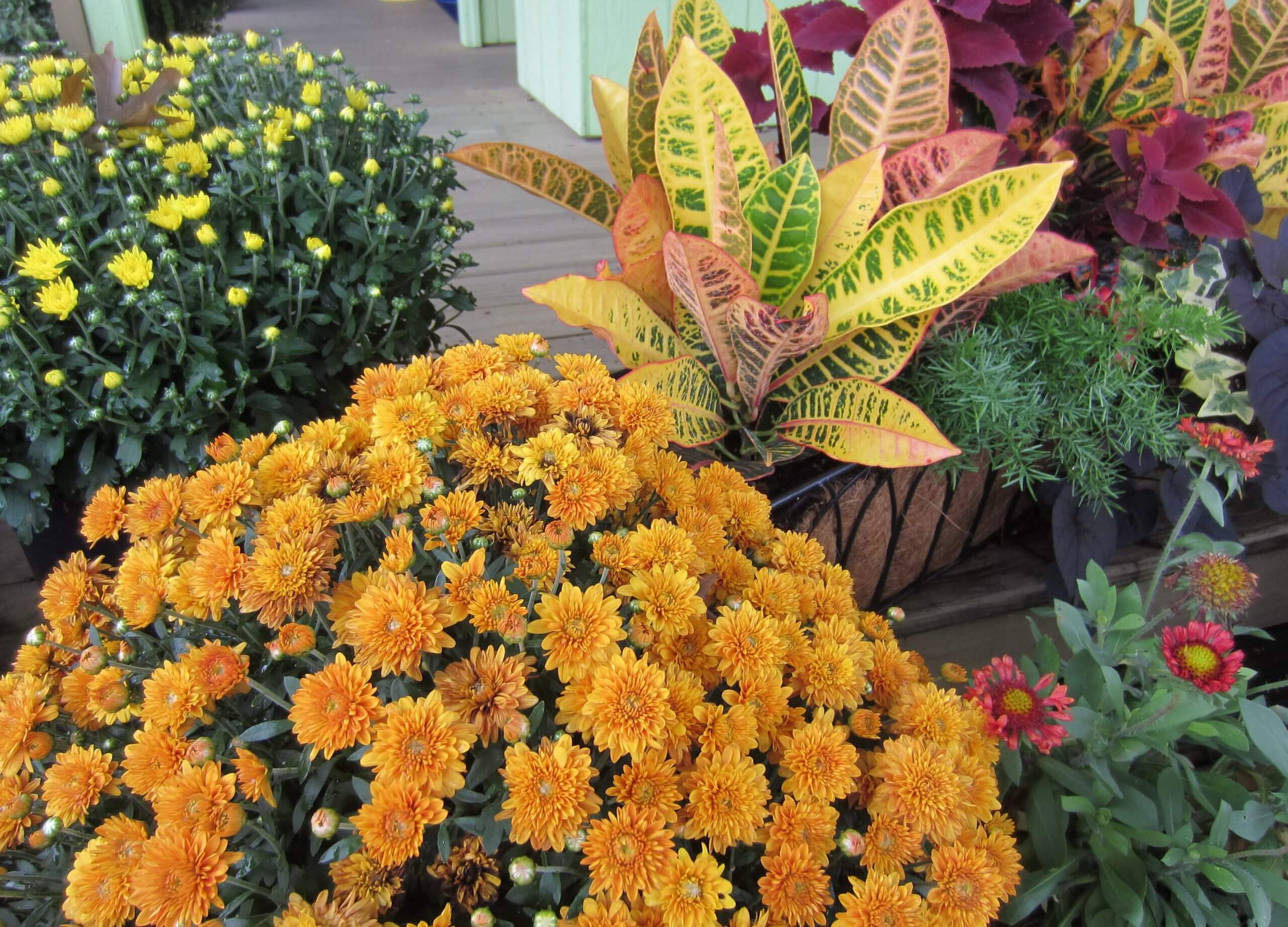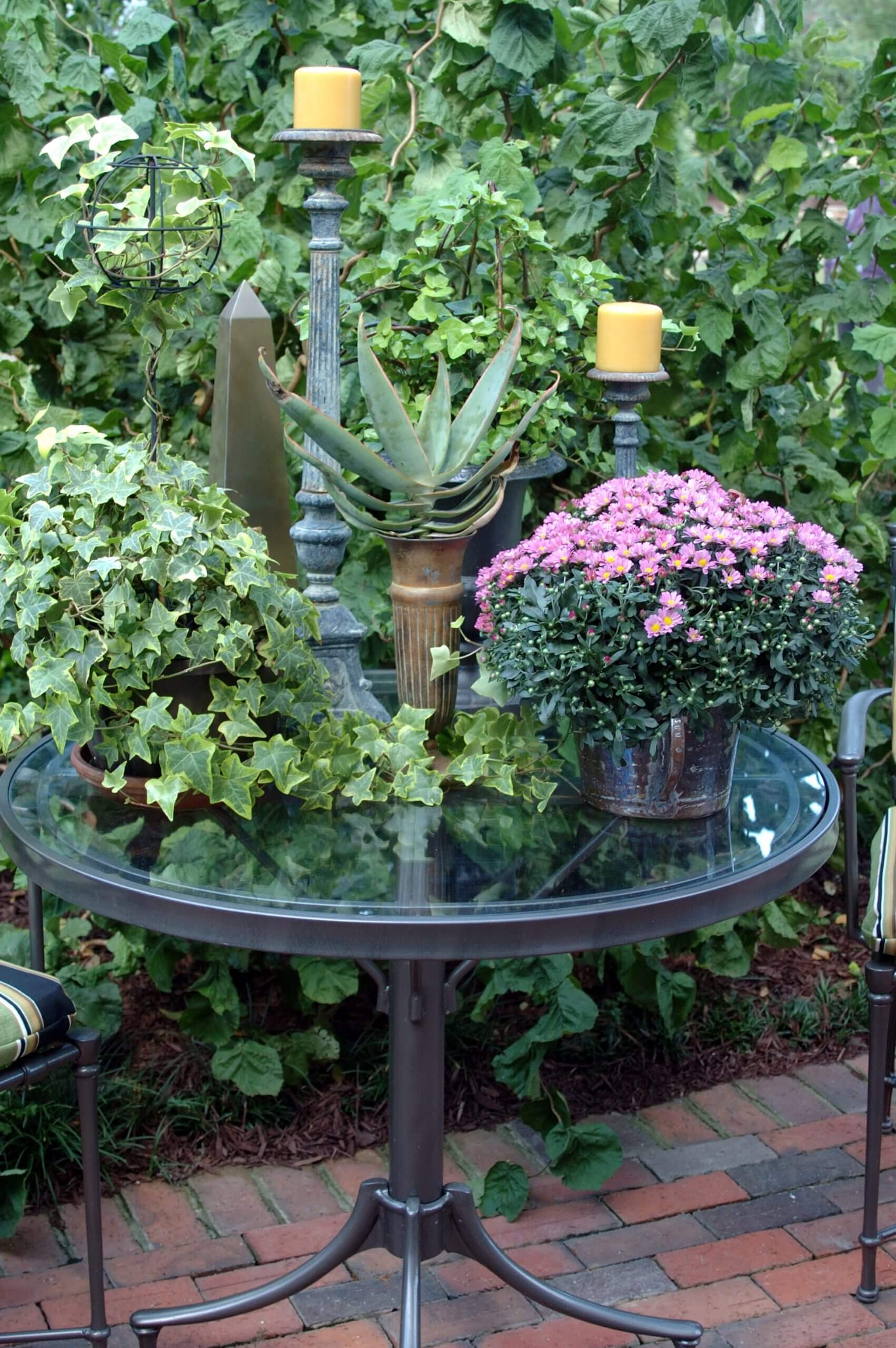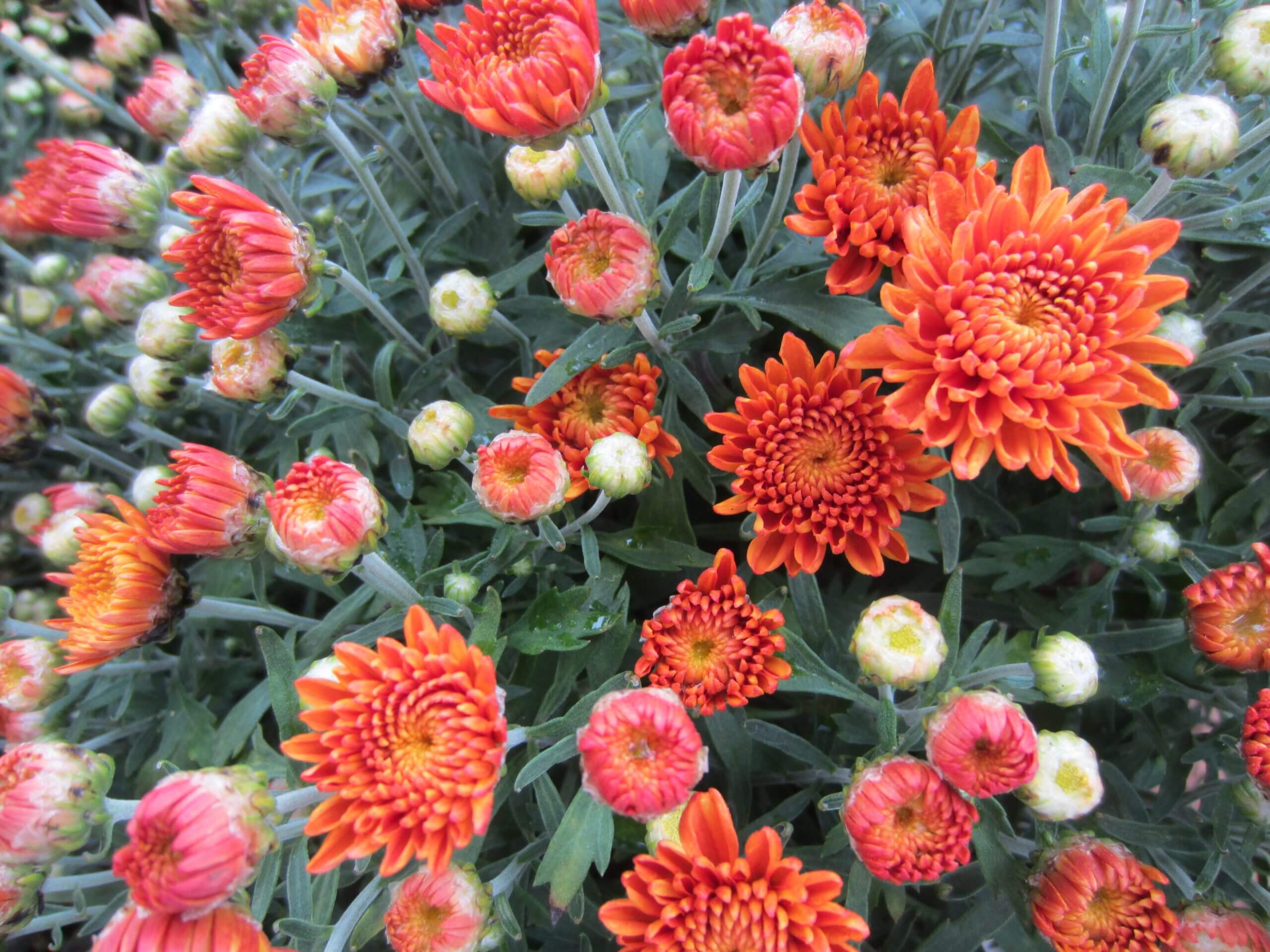
“The white chrysanthemum
Even when lifted to the eye
Remains immaculate”
∼Matsuo Basho
When the air is crisp and leaves start to change color, I think about chrysanthemums. The first mums that come to mind were the ones that we used to wear at football games. Now that I’ve revealed my age, I confess that I miss seeing huge mum corsages decorating ladies’ stadium jackets. Pipe cleaner initials for high schools and colleges were inserted into these popular corsages with bright ribbon streamers in our favorite school’s colors fluttering below. The memorable fragrance of the softball-sized mums was faint and pleasantly clean. A couple of mine are still pressed, browning in old scrapbooks in the attic.

Sacred Flowers
Mums have been revered and cultivated by the Chinese throughout their recorded history, and this sacred flower is still honored by the Japanese as their national imperial flower. Related herbs include Feverfew (Tanacetum parthenium), Tansy (Tanacetum vulgare), and Costmary (Tanacetum balsamita). Chrysanthemums were popular in Europe before being introduced to America in 1798. The simple oxeye daisy, the familiar daisy of our childhood game of “He loves me? He loves me not?” leapt the big pond and naturalized across North America so well that it is now considered a roadside weed.
Florist Mums
Florist mums (Chrysanthemum × grandiflorum) and their countless hybrids and cultivars are very much sought out as cut flowers for floral arrangements and interior decorating. They include every shape from pompons, decoratives, spiders and spoons, to the beloved single “daisy-type” single mums preferred by springtime brides. (Learn more about Chrysanthemum classification here.) Many are greenhouse mums, also known as florist or exhibition mums, which are only marginally hardy, even here in southeastern gardens.
If you want to grow potted florist chrysanthemums indoors, remember that these mums like cool temperature of 50-60 degrees, which is a bit chilly for most of us! You will need to place your mums near an eastern facing window for early morning sun, or near a late afternoon light source. With even watering, a cool location, and adequate light, your mums could bloom inside for a month or more. After flowering, cut the plants back, then allow them to grow out again for a second flush. When potting up interior mums, use Black Gold® All Purpose Potting Soil with Controlled Release Fertilizer to provide good drainage and supply nutritional needs.

Mum Containers
For mums more suitable for your garden and outdoor containers, ask your garden center professional for hardy perennial mums. The colorful, spreading, perennial mums are a perfect filler in larger containers during the transition from early fall into winter. Their colors echo the yellows, oranges, rusts and purples of this season, and treated as a temporary spot-filler these hardy fall mums can be lifted and transplanted into the landscape when they begin to fade.
Planting Mums
Since the mature mums that you take home in fall are probably already saturated with a slow-release fertilizer, all that you have to do to plant them is incorporate the flower bed with organic material first. I use Black Gold® Garden Compost Blend. Please don’t cram a mum down into a solid clay hole then expect to see it return next spring!
Mum Care
Keep your mums well watered. If the leaves wilt and the lower ones fall off, you need to increase watering. Mums are perfectly happy in the cool 50-60 degree weeks of late September into October, but watch for the first hard frost. When one comes, add a mulch layer around the plants to tuck them into bed for the winter. At this time, some gardeners will cut back their mums, but you can leave the browning foliage alone until spring. This will encourage overwintering.
 In early spring you will notice that your mums may have multiplied. The daughter plants, which are smaller and surround the mother’s base, will need to be separated and transplanted to allow each one adequate elbow room to grow. Again, condition the soil in your new planting area.
In early spring you will notice that your mums may have multiplied. The daughter plants, which are smaller and surround the mother’s base, will need to be separated and transplanted to allow each one adequate elbow room to grow. Again, condition the soil in your new planting area.
For success, fertilize your mums regularly, keep an eye on the watering and begin pinching. This means that you will be cutting back your garden mums when they reach a height of 6 to 8 inches. Keep pruning until mid-July for the best display of fall color in your landscape. If you want exceptionally large blooms, you may try a trick I learned while working for a local nursery by disbudding the small side buds to allow one large flower per stalk to receive more energy.
I hope that while working colorful, perennial mums into your home and garden schemes this year that you may hear the distant commotion of a nearby high school football game and pick a mum blossom to tuck into your work shirt buttonhole, if not create your own elaborate corsage.

